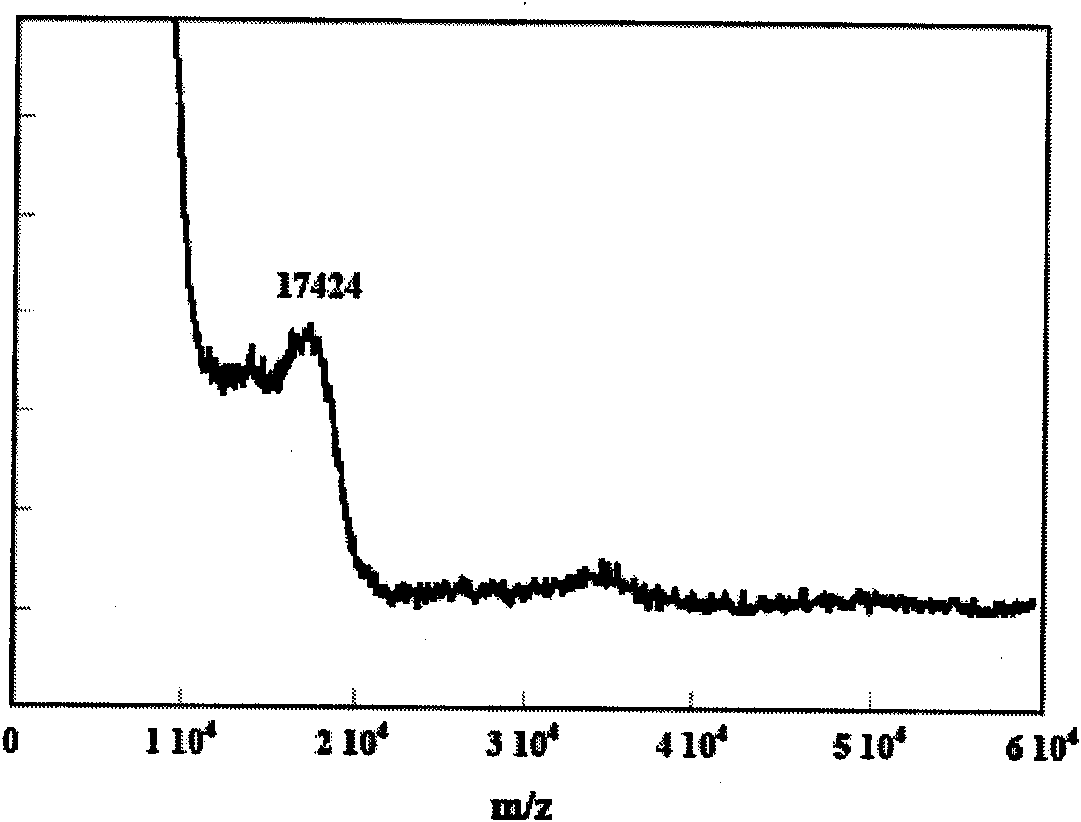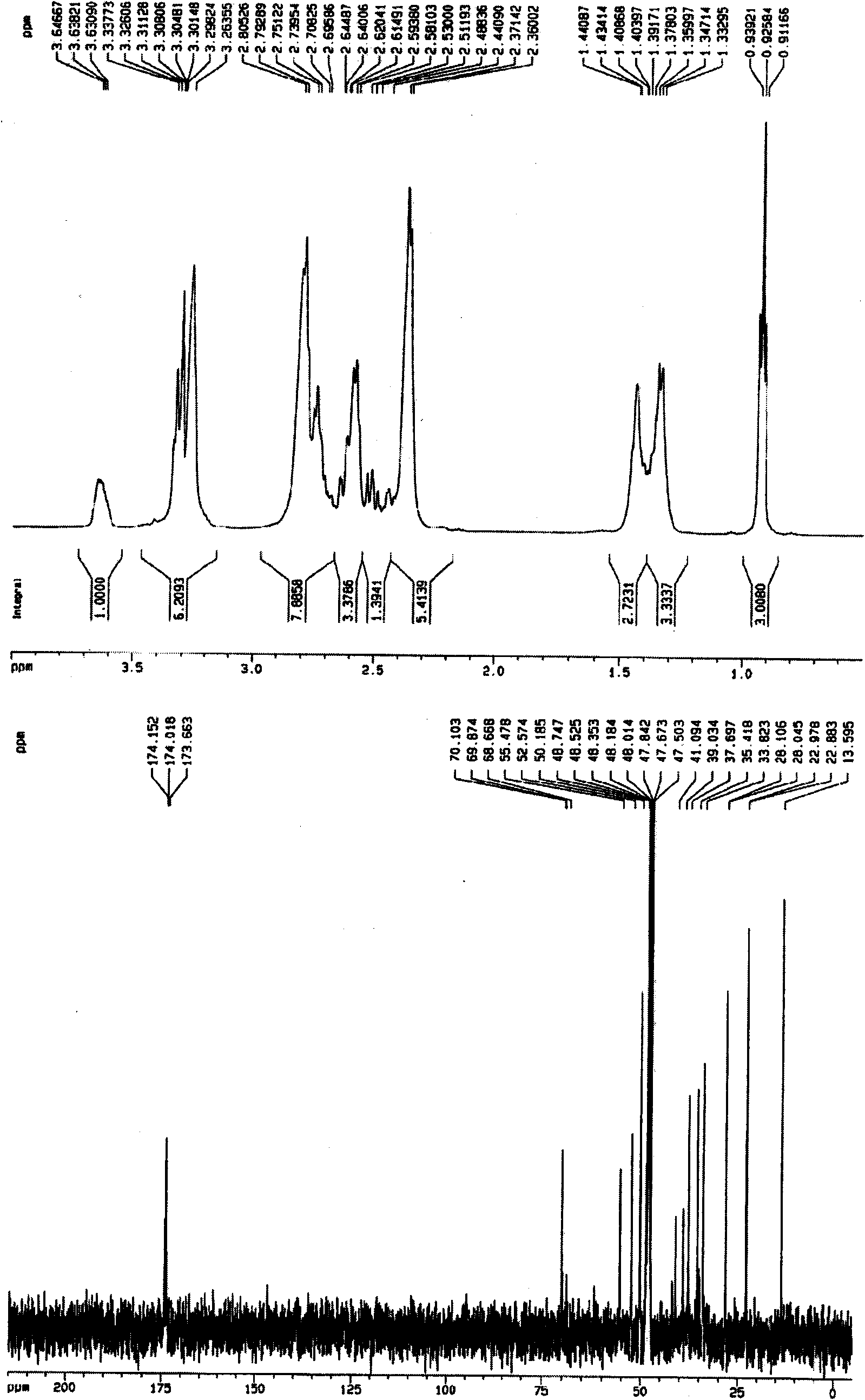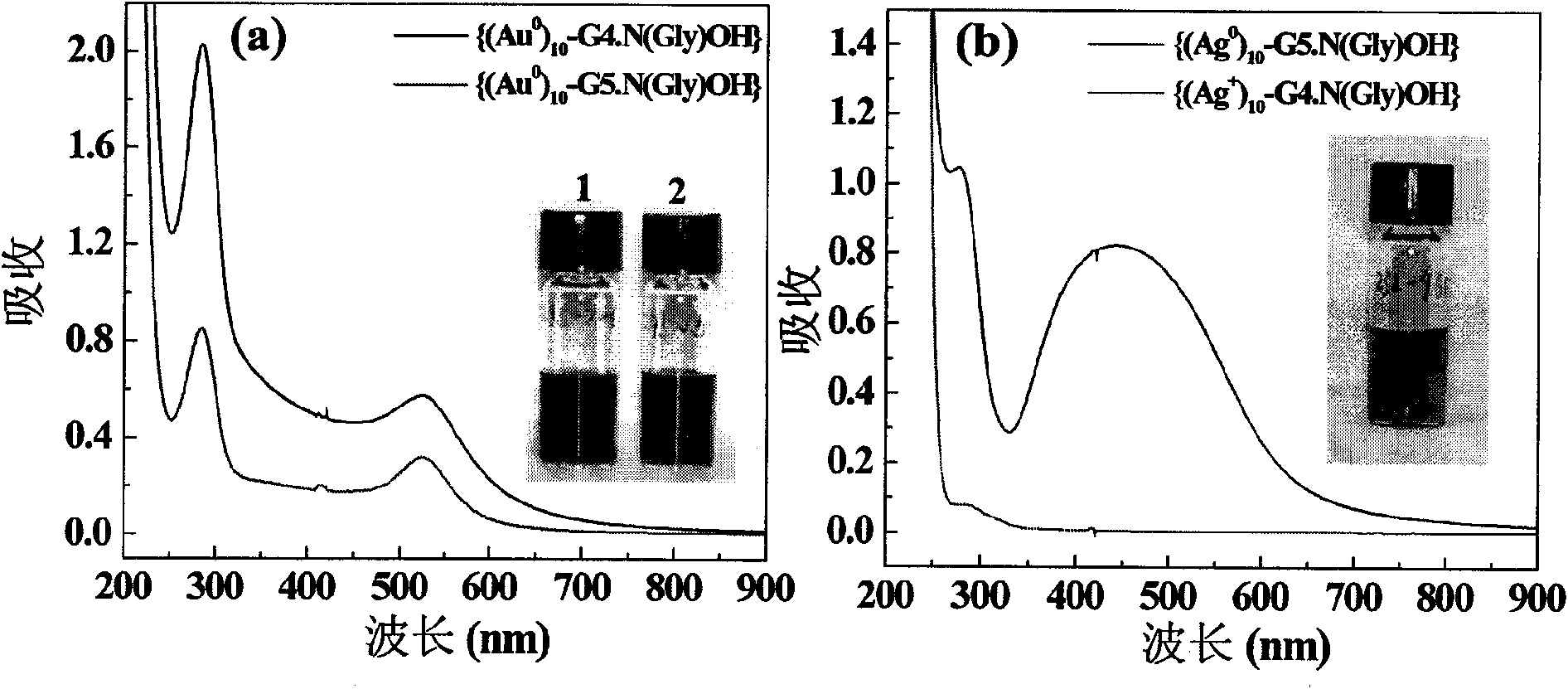Method for preparing gold/silver nano particle with stable hydroxylated dendritic polymers
A technology of silver nanoparticles and dendrimer, applied in the field of preparation of gold/silver nanoparticles
- Summary
- Abstract
- Description
- Claims
- Application Information
AI Technical Summary
Problems solved by technology
Method used
Image
Examples
Embodiment 1
[0045] (1) Dissolve G4.NH with a dry weight of 2.1164g in 50mL of methanol 2 . Then, hexane oxide (2.42 g, hexane oxide / dendrimer amino terminal molar ratio=2.5:1) dissolved in 50 mL of methanol solution was added dropwise while stirring, and the mixture was reacted for 72 hours, and methanol was removed with a rotary evaporator. The resultant was diluted with 10 mL of methanol, and was subjected to methanol dialysis (MWCO=3500 dialysis membrane, 6 times 4 liters) for 3 days to remove by-products and excess reactants. The remaining solution was mixed with water and lyophilized to give 2.65 g of solid G4.NHexylOH (65.9%).
[0046] (2) At room temperature, the 4th generation dendrimer methanol solution (3mL, 0.35mM) and HAuCl 4 Methanol solutions (3 mL, 3.5 mM) were mixed and stirred vigorously for 24 hours. After 12 hours of reaction, the solution turned dark red, indicating the spontaneous formation of gold nanoparticles. The mixture was then dried with a small flow of nit...
Embodiment 2
[0048] (1) Dissolve G4.NH with a dry weight of 3.0004g in 50mL of methanol 2 . Then, glycidol (1.9 g, glycidol / dendrimer terminal amino molar ratio=2.1:1) dissolved in 50 mL of methanol solution was added dropwise while stirring, and the mixture was reacted for 24 hours, and methanol was removed with a rotary evaporator. The resultant was diluted with water, and after 3 days of water dialysis (MWCO=3500 dialysis membrane, 6 times 4 liters) to remove by-products and excess reactants. The remaining solution was mixed with water and lyophilized to give 3.92 g of solid G4.NGlyOH (92.2%).
[0049] (2) At room temperature, G4.NGlyOH methanol solution (3mL, 0.35mM) and HAuCl 4 Methanol solutions (3 mL, 3.5 mM) were mixed and stirred vigorously for 24 hours. After 12 hours of reaction, the solution turned dark red, indicating the spontaneous formation of gold nanoparticles. The mixture was then dried with a small flow of nitrogen stream, and the mixture was redissolved in water an...
Embodiment 3
[0051] (1) Dissolve G4.NH with a dry weight of 3.0004g in 50mL of methanol 2. Then, glycidol (1.9 g, glycidol / dendrimer terminal amino molar ratio=2.1:1) dissolved in 50 mL of methanol solution was added dropwise while stirring, and the mixture was reacted for 24 hours, and methanol was removed with a rotary evaporator. The resultant was diluted with water, and after 3 days of water dialysis (MWCO=3500 dialysis membrane, 6 times 4 liters) to remove by-products and excess reactants. The remaining solution was mixed with water and lyophilized to give 3.92 g of solid G4.NGlyOH (92.2%).
[0052] (2) At room temperature, G4.NGlyOH aqueous solution (3mL, 0.35mM) and HAuCl 4 Aqueous solutions (3 mL, 3.5 mM) were combined and stirred vigorously for 24 hours. After 12 hours of reaction, the solution turned dark red, indicating the spontaneous formation of gold nanoparticles. Then freeze-dried to obtain {(Au 0 ) 10 -G4.NGlyOH}.
PUM
 Login to View More
Login to View More Abstract
Description
Claims
Application Information
 Login to View More
Login to View More - R&D
- Intellectual Property
- Life Sciences
- Materials
- Tech Scout
- Unparalleled Data Quality
- Higher Quality Content
- 60% Fewer Hallucinations
Browse by: Latest US Patents, China's latest patents, Technical Efficacy Thesaurus, Application Domain, Technology Topic, Popular Technical Reports.
© 2025 PatSnap. All rights reserved.Legal|Privacy policy|Modern Slavery Act Transparency Statement|Sitemap|About US| Contact US: help@patsnap.com



